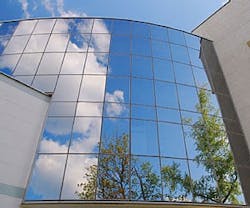Planning for Sustainability
The facilities group at a leading college in Massachusetts recently integrated sustainability into ongoing capital planning by undertaking a program that included concurrent green building and facility condition assessments. A team of skilled assessors gathered critical condition, performance, and sustainability information across all four of the college’s campuses. By combining sustainability practices within normal maintenance and operations and ranking buildings by goal, the college was able to prioritize its capital spending plan for each asset while still targeting the projects, deferred maintenance, and upgrade opportunities across the entire portfolio. This strategy will assist the college in reducing its carbon footprint.
With detailed information about the costs and benefits of potential green investments, you can effectively evaluate which initiatives will ultimately provide the greatest results.
The many potential greening initiatives you can undertake compete with other capital and operational investments, including systems renewal, building renovations, and new construction. Green investments should be assessed in the context of other building requirements.
Establish Framework
Begin by establishing a framework based on your organization’s goals. When integrating condition and sustainability assessments with your organization’s initiatives, take financial metrics into account. What is the cost of the sustainable alternative as opposed to an in-kind replacement? How long is the lifecycle of each option? What will the payback of the sustainable option be?
Establish Metrics
The next step is to establish key performance metrics that will be used to set a baseline, identify relevant green opportunities, and measure progress. After the performance metrics have been established, you can identify green opportunities while also looking at overall facility condition and operations. Common green opportunities include high-efficiency lighting controls and sensors, water-conserving bathroom fixtures, automated building management systems, indigenous landscape, and materials with recycled content or bio-based materials.
Evaluate Opportunities
Once you identify the opportunities, the next step is to evaluate them in the context of the overall capital plan. Take into account initial cost differences between using sustainable alternatives and conventional improvements along with the savings over time. The best way to evaluate all the options is to set a list of parameters that represent important priorities, which may include cost, potential energy or water savings, and impact on overall facility condition. Using these parameters, you can make an informed, data-driven decision.
Examples of Planning for Sustainability
-
At one of the leading government-sponsored research centers in the U.S., the facilities department successfully gathered the critical facility data it required to meet the Federal Government’s Executive Order 13423. In addition, the California center created water and energy baselines and used alternative green renewal choices to create integrated capital budgets, demonstrating its commitment to becoming more sustainable while maintaining its portfolio day-to-day.
-
One Boston hospital’s facilities group needed to create a viable and defensible implementation plan for sustainability in order to justify access to the necessary capital. It focused on the incorporation of green options into the capital planning process, creating definitive green projects with demonstrable costs and benefits while doing its traditional planning, and forecasting the impact of those projects. For instance, by recommending the replacement of its 80-horsepower domestic water pumps with a new variable frequency drive (VFD) system with variable controls, the hospital was able to reduce run time from 24/7 to variable runs at 15-horsepower as needed. The estimated cost savings over a year equated to a two-and-a-half-year payback on the investment in the new pumps.
With the right framework and tools in place, you can evaluate the sustainability of your existing facilities, plan to reduce your environmental impact, increase your energy and water efficiency and cost savings, and promote a healthier building environment. Whether you already have a sophisticated sustainability program or are newly engaged in this effort, it is desirable to evaluate and prioritize green options while remaining aligned with the overall business mission.
Susan Buchanan, LEED AP, is project director at VFA, Inc., and has 30 years of experience in construction, project management, alternative construction methods, and sustainable systems design.
